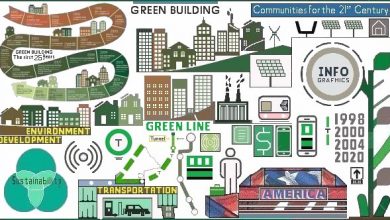
Dear Dr. Chowdhury, could you define the main technology trends of today? What is their impact on transportation?
Shipping and Transportation industry has always been one of the early adopters of technology. As transportation industry was having a cut-throat competitive market where margins are razor-thin, cost saving even at micro-level had significant impact on the overall profitability. Technology enabled visibility and real-time tracking, monitoring and reduction of lead time etc. had helped this industry to add value and thus gaining customer confidence in the past. Incumbent operators were able to achieve their business objectives by relying on to traditional technologies. However, technology trends have changed a lot in last 4-5 years and they became affordable as well. With the advent of cutting-edge digital technologies like Artificial Intelligence, Machine Learning, Blockchain, Internet-of-Things, Automation and Robotics, Cloud, Analytics and Data Science etc. many business disruptions started to happen across industries and that impacted transportation industry too. Let’s say for an example, a temperature-controlled container shipped from a shipper location to consignee location via multiple mode of transport i.e., Road and Sea. Erstwhile, a GPS-Barcode enabled tracking system could track-and-trace the same and forecast tentative delivery timelines but exact reason and analytics for delay (say bad road and weather conditions) could not be taken into consideration. But in case an AI/ML based algorithm is deployed with the help of IoT sensors, it can forecast, collect data, and reforecast even during the journey. It can take into consideration: current traffic situation & waiting time, road conditions & delays for that, weather conditions, current speed for the vehicle, fuel efficiency and update the customer on more accurate delivery time. Besides, it can precisely calculate the carbon emission for the shipment – planned vs. actual and send the data to customer for carbon compliance. Thus, today’s technology trends are not only having significant impact on entire transportation industry but, moving forward they may become key for survival for any freight and transportation service provider. New technologies are increasingly becoming effective for accurate supply chain planning and execution.
How would you describe the benefits of transportation management systems?
Transportation Management System (TMS) is primarily a logistics information system (LIS) which can help to facilitate and manage all activities that take place before, during, and after the transportation movement. It incudes, but may not be limited to freight planning and optimization, freight execution, real-time tracking in-transit, freight payment settlement, carrier collaboration, reporting, analytics, and insights. TM systems often needs to have native integration between shipping organization’s ERP system and Warehouse Management System (WMS) to ensure seamless planning and execution of the shipment. TMS need to have excellent collaboration capability with external systems like 3PL and 4PL systems as probability of subcontracting and outsourcing is normally high in transportation industry.
An efficient TM system may benefit the organization in the following way:
- Cost optimization by planning and executing the shipment through most cost-effective route. Automatic freight tendering to least costly carrier.
- Avoiding penalties for non-conformation of regulatory compliance i.e., dangerous goods, customs and security filing, carbon emission etc.
- Lead time tracking and lead-time mitigation of activities closely tied with transportation i.e., picking, packing, staging, loading, unloading etc. Labor charges are involved in each of these activities.
- Enabling seamless collaboration with stakeholders i.e., carriers, freight handlers, 3PL providers etc. which helps to improve customer satisfaction and delivery performance.
- Auto-generation, processing, and transmission of customer billing documents to avoid any penalty provisions due to delay.
- Elimination of capacity shortage and capacity surplus situations using real-time capacity planning and optimization capabilities.
What are your thoughts on real-time transportation visibility?
Real-time transportation visibility has started to revolutionize with the advent of digital technologies, and it is already creating disruptions across the transportation industry. GPS and internet enabled semi-guided vehicles in near future will have the capability backed by TMS to forecast possible hazards en-route and adopt an alternate route. Several companies are now implementing real-time transportation visibility platforms (RTTVPs) which strengthens customer confidence and creates insights on overall supply chain strategy for the organization. RTTVPs enable access to real time actual data for global transportation which includes actual stops and breaks, waiting time at the borders, road traffic and weather conditions etc. to have insights for shippers, freight forwarders and their customers intended to maximize their overall return-on-investment (RoI). I believe real time transportation visibility has still to improvise a lot handshaking with emerging technologies and it will be a key to supply chain 4.0 or 4th industrial revolution.
Why do you think are customer needs so fast-changing nowadays?
Customer needs and expectations have always evolved in the past but with the blooming of technology, end-consumer behavior and buying patterns are shifting – resulting in shift in the needs and expectations of the manufacturer or seller. Let’s take the example of Retail customers whose point-of-sale channels gradually shifting from physical store to online portals. For an online channel, traceability of the product is crucial even after ordering. Delivery of such precise tracking and reporting even if consolidation happen in dry ports. Besides, rapid growth of information technology is making the customer well informed. They are always finding the best deal in real-time – pushing the incumbent players in each industry to become more agile, dynamic, and resilient, which in turn being passed on to logistics service providers. In short, customers are now wanting more efficient service than ever before with more competitive price so that they are not outsmarted by their competitors in a well-informed market.
In your opinion, how did Covid-19 pandemic influence the global supply chain management?
Covid-19 pandemic has impacted almost all global supply chains and created disruptions in manufacturing, transportation, and distribution activities. Seamless flow of all product categories i.e., raw material, semi-finished goods to finished products got impacted and businesses lost their revenue. Fortunately, the pandemic has accelerated pre-existing trends of supply chain digitization and automation across all industry verticals and in forced the organizations to adopt digital-supply-chain strategy which is far more agile and resilient than the traditional ones. Besides, cloud based collaborative platforms are being implemented across the supply chains which provide better inventory visibility and enable flow of real time information across all supply chain partners. Though trade wars, global politics and national policies will influence the future of global supply chains, investment in technology and considerations on sustainability will be key for survival in a post-pandemic world. I expect future supply chains will be driven by innovations, supported by digital technologies, and streamlined by global environmental compliances.











